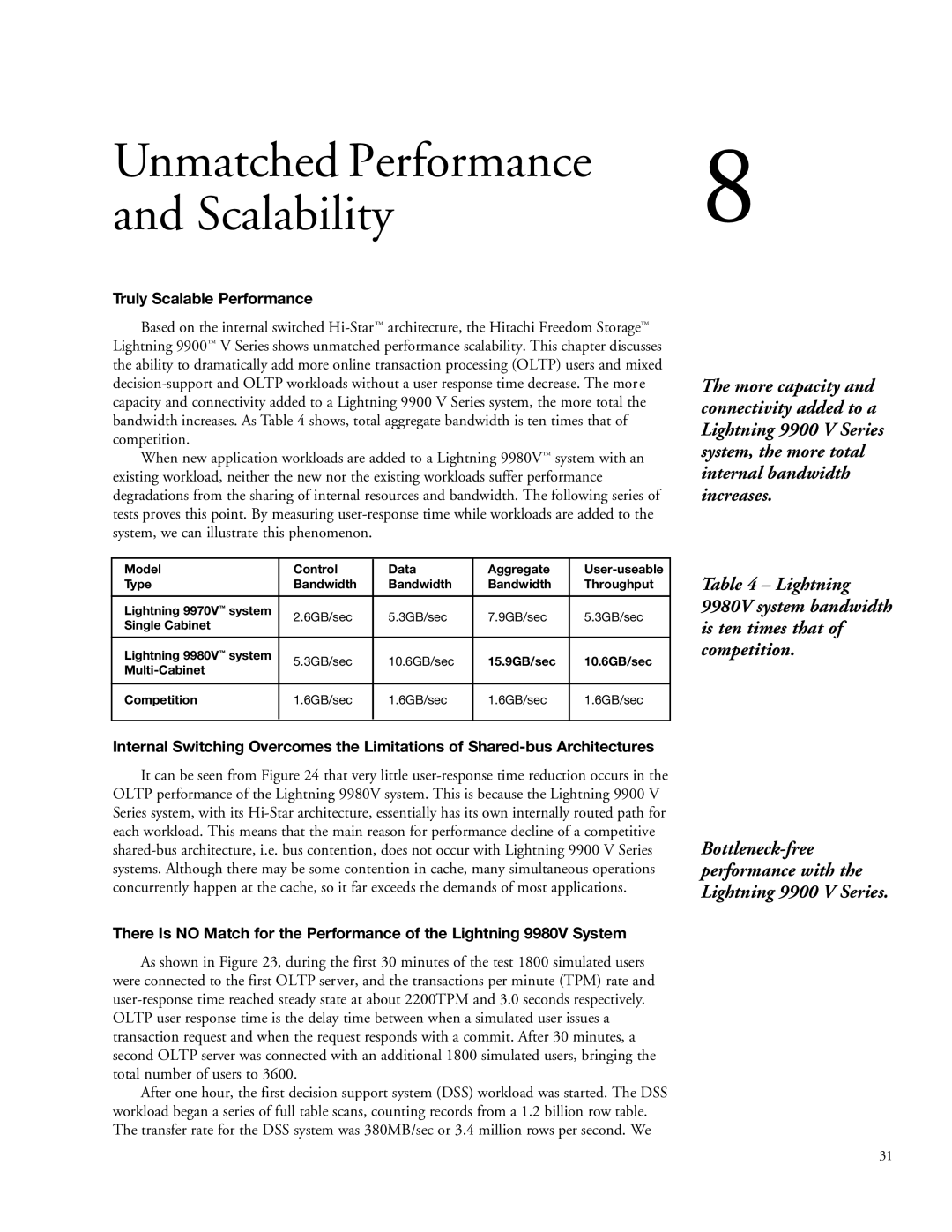
Unmatched Performance and Scalability
Truly Scalable Performance
Based on the internal switched
When new application workloads are added to a Lightning 9980V™ system with an existing workload, neither the new nor the existing workloads suffer performance degradations from the sharing of internal resources and bandwidth. The following series of tests proves this point. By measuring
Model | Control | Data | Aggregate | ||
Type | Bandwidth | Bandwidth | Bandwidth | Throughput | |
|
|
|
|
| |
Lightning 9970V™ system | 2.6GB/sec | 5.3GB/sec | 7.9GB/sec | 5.3GB/sec | |
Single Cabinet | |||||
|
|
|
| ||
|
|
|
|
| |
Lightning 9980V™ system | 5.3GB/sec | 10.6GB/sec | 15.9GB/sec | 10.6GB/sec | |
|
|
|
| ||
|
|
|
|
| |
Competition | 1.6GB/sec | 1.6GB/sec | 1.6GB/sec | 1.6GB/sec | |
|
|
|
|
|
8
The more capacity and connectivity added to a Lightning 9900 V Series system, the more total internal bandwidth increases.
Table 4 – Lightning 9980V system bandwidth is ten times that of competition.
Internal Switching Overcomes the Limitations of
It can be seen from Figure 24 that very little
There Is NO Match for the Performance of the Lightning 9980V System
As shown in Figure 23, during the first 30 minutes of the test 1800 simulated users were connected to the first OLTP server, and the transactions per minute (TPM) rate and
After one hour, the first decision support system (DSS) workload was started. The DSS workload began a series of full table scans, counting records from a 1.2 billion row table. The transfer rate for the DSS system was 380MB/sec or 3.4 million rows per second. We
31
